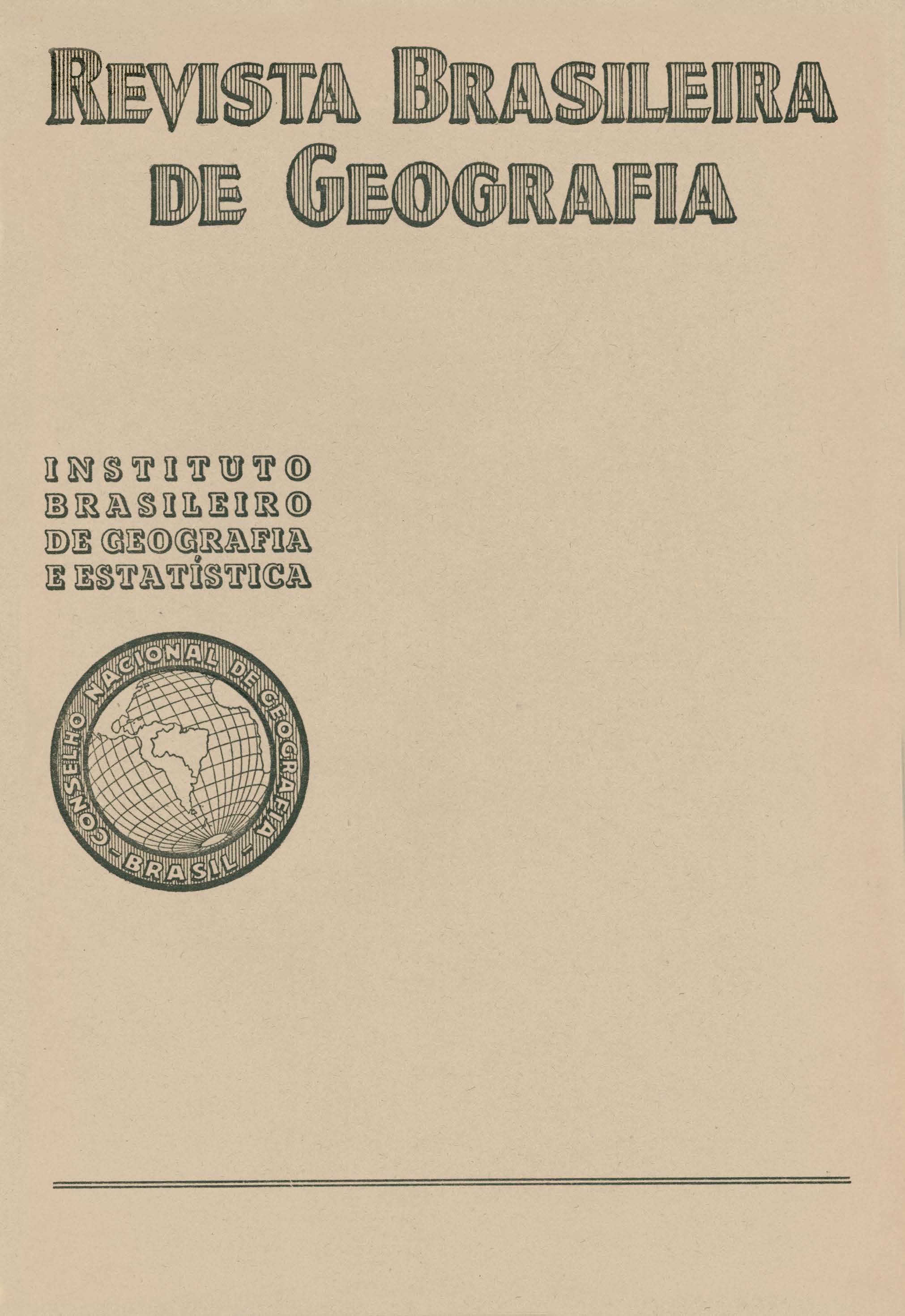Levantamento agrogeológico do Estado de São Paulo
Resumo
Mr. José Setzer, assistant to the Soils Section of the Agronomic Institute of the State of São Paulo made an interesting conference on "Pedologia" and the work of that Section, in the Associação dos Geógrafos Brasileiros in the capital of the State. The "Revista Brasileira de Geografia" in publishing this conference as an article about "one of the most useful and recent sections of modero geography", at the same endeavours to divulge knowledge about this scientific branch, and renders hommage to 'the efforts, competence and dedication of the technicians of São Paulo.
The "Science of the soil", also called "Pedologia" or "Edafologia", has as its object, according to the author, the study of land utilization, from the agricultural point of view. For its study it envolves the use of many scientific fields, - from the genesis to the feeding mecanlsn1 of the plant, - from Geology up to Biology. The systematic study of a region is called an "agro-geological survey".
He tells of the organization of the Service in the State of São Paulo, on the initiative of Dr. Teodureto de Almeida Camargo, who contracted the prominent German scientist, Professor Paul Vageler, a specialist on tropical and sub-tropical solis, to take charge of the Soils Section. The work is now entrusted to an engineer in agronomics, a mining engineer and a chemical engineer. The activities are divided into field wark, laboratory work, auxiliary researches, co-ordination of results and agro-geological map and graph making.
The field work consists of collecting samples of earth and rock, altitude notes, physlographic, topographic, geological and phyto-geographical conformation of the terrain, magnetometric measurements, state of secondary and cultivated vegetation, forms of soil exploration, and economic and meteorological factores. The samples of earth are of two kinds: complete profile (cuts of about 1 1/2 depth divided into horizontal sections) and surface samples, taken from typical spots as representative types of soil in large tracts.
Physical .analyses consist of determining the specific weights, both apparent and real, natural porosit maximum (well ploughd soil) and minimum, and natural water contents, maximum and minimum. Further tests are carried out such as kinetic researches, energetic resistance. to erosion, . mechanical analysis (granulometric composition). The soluble, changeable and total contents of. the several nutritive chemical elements are chemically indicated. He describes the various trootments for these indications and the elements searched. All results are presented in milliequivalents and. in volume of earth. They also determine the structure of the colloidal complexes as to their silica and sesquioxides of aluminium and iron, and obtain a triangular diagram divided into nine régions, which represent as many other types of soil - a discovery made by Prof. Vegeler for the classification of tropical and sub- tropical soils. He offers details of the various analyses, down to the examination of the ashes of the plants, about which he states "In certain sols and under different conditions of manuring, irrigation, physical treatment or variety of plant, in the ashes are found quantitites appreciably different of certain nutritive elements" and affirms that such researches, besides contributing to Science, are necessary to the study of the needs of each culture in the differen t types of soil.
Speaking about the rational use of the soil, he says that once the exactions of each culture are known, we can establish which are the most appropriate solls and which snould be avoided. He speaks about the forestation of certaln barren lands of São Paulo, naked and given over to erosion and points out the loss which the practice of burning the surface vegetation has caused and is still occasioning.
He affirms that the physical characteristics of the different types of soil the State of São Paulo, already known by the Institute, permit the fight against erosion to be carried out in an economic and efficient manner.
He cites the following results already obtained: survey of nearly 20 Km of highways, profiles of which showing altitudes, nature of the mother rocks of the soil, in coloured graphs drawn to the scale 1:5.000, with the principal geographical reliefs and localization of the samples of earth and rock; the organization of an agro-geological map of the State drawn to the scale of 1:1000.000'; which embodies modifications of general points of view already established, corrects certain erroneous suppositions (the author points out the modifications and corrections and supplies technical details of the map); 400 complete soil profiles already studied, besides thousands of surface samples; petrographic study of more than one thousand rock samples and more than 5.000 typical photos of the vegetation. topography and physiographic and geological conformation of different regions.
Twelve graphs are exhibited and, in the end, in a suggestive and well prepared table he furnishes the definition of·the ·22 types of soil already characteristically established.






